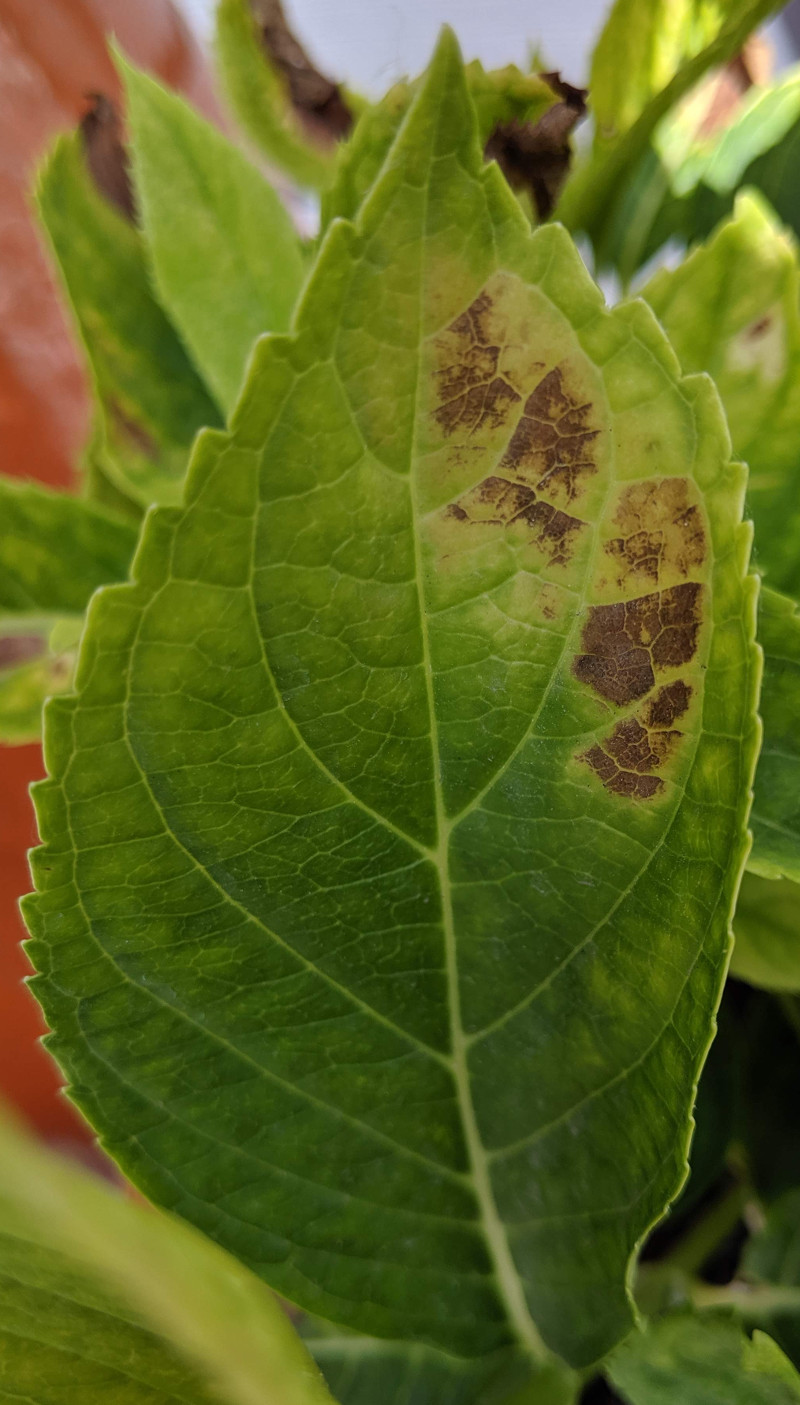Hydrangea Leaves Turning Yellow Fundamentals Explained
Wiki Article
Some Known Details About Hydrangea Leaves Turning Yellow
Table of ContentsThe Ultimate Guide To Hydrangea Leaves Turning YellowHow Hydrangea Leaves Turning Yellow can Save You Time, Stress, and Money.Rumored Buzz on Hydrangea Leaves Turning YellowEverything about Hydrangea Leaves Turning Yellow
Huge fallen leaves typically look sagging during the mid-day warm. When they stop working to perk up in the evening or still look shrivelled in the morning, your plant might be overwatered.Remove the plant from the dirt and trim out any roots that aren't white and swollen (plump). Replant in a brand-new location or function some sand right into the dirt for far better drain.
Include a bit of distilled water, stir the components, and drain the additional water. Put a p, H screening strip in and wait for a reading.
The very best way to do that is with dirt modifications. Sphagnum moss or peat moss protects against the dirt from compacting and betters dirt drain while additionally raising the dirt's acidity. You can spread sulfur chips in your hydrangea soil. The most convenient way is to merely make use of a fertilizer that helps maintain the proper level of acidity in the soil while also feeding the plant.
The Main Principles Of Hydrangea Leaves Turning Yellow
This is one great reason to repot houseplants on a regular basis (though there are others, such as origin growth for instance). It is likewise why houseplants require a much stricter feeding regular than most exterior plants. When a hydrangea houseplant is deficient in nutrients, its leaves will be the first to show the signs.
You will likewise need to feed the plant manually and regular periods. When springtime starts in March, it's the active growing season for numerous houseplants, consisting of hydrangeas.
The dripline is the location located under the vegetation that is the outermost away from the facility of the plant. Instead than applying feed to the facility of the plant it is best to concentrate it primarily in the outer locations of the pot. If you would certainly instead utilize a slow-release fertilizer such as granular or spike fertilizer, after that cover either kind with some soil after you place them.
Fascination About Hydrangea Leaves Turning Yellow
Although the hydrangea is surprisingly frost-resistant, when temperature levels begin obtaining into the 20s, the plant is in major danger. If the temps are in the reduced 10s, that risk is extra extreme still. Undoubtedly this is even more of a Recommended Reading worry with outdoor plants so if you maintain potted hydrangea outside you should bring them inside in extremely chilly climate conditions and even take into consideration relocating them inside throughout of the winter season.

A dehydrated hydrangea, A big issue with check out this site lots of houseplants is origin rot. Root rot happens when you overwater a plant and since it is such a common issue (specifically with succulents) lots of houseplant owners are frightened of overwatering their plants. However, hydrangeas require even more watering that most various other usual houseplants and can end up being dehydrated when they are underwatered (Hydrangea Leaves Turning Yellow).
Hydrangea Leaves Turning Yellow Can Be Fun For Everyone
Be definitely sure that your hydrangea is dried out due to an absence of water and not due to it be provided also much water (a lot more on this later). Overwatering is a severe problem if you cut corners on its water needs even a little bit, your hydrangea will be fast to show it., you will rapidly tell if the plant needs water. To obtain your hydrangea watering practices on the ideal track, you require to be mindful concerning the moisture levels in its dirt.
When you remove your finger from damp soil it will have percentages of soil residue stayed with it. Dry soil will certainly suggest your finger comes out tidy or with dry soil that is easily blown away. If it's damp, and the plant has yellow leaves then the plant has likely been overwatered and you will require to comply with the recommendations given in the section below.
Report this wiki page